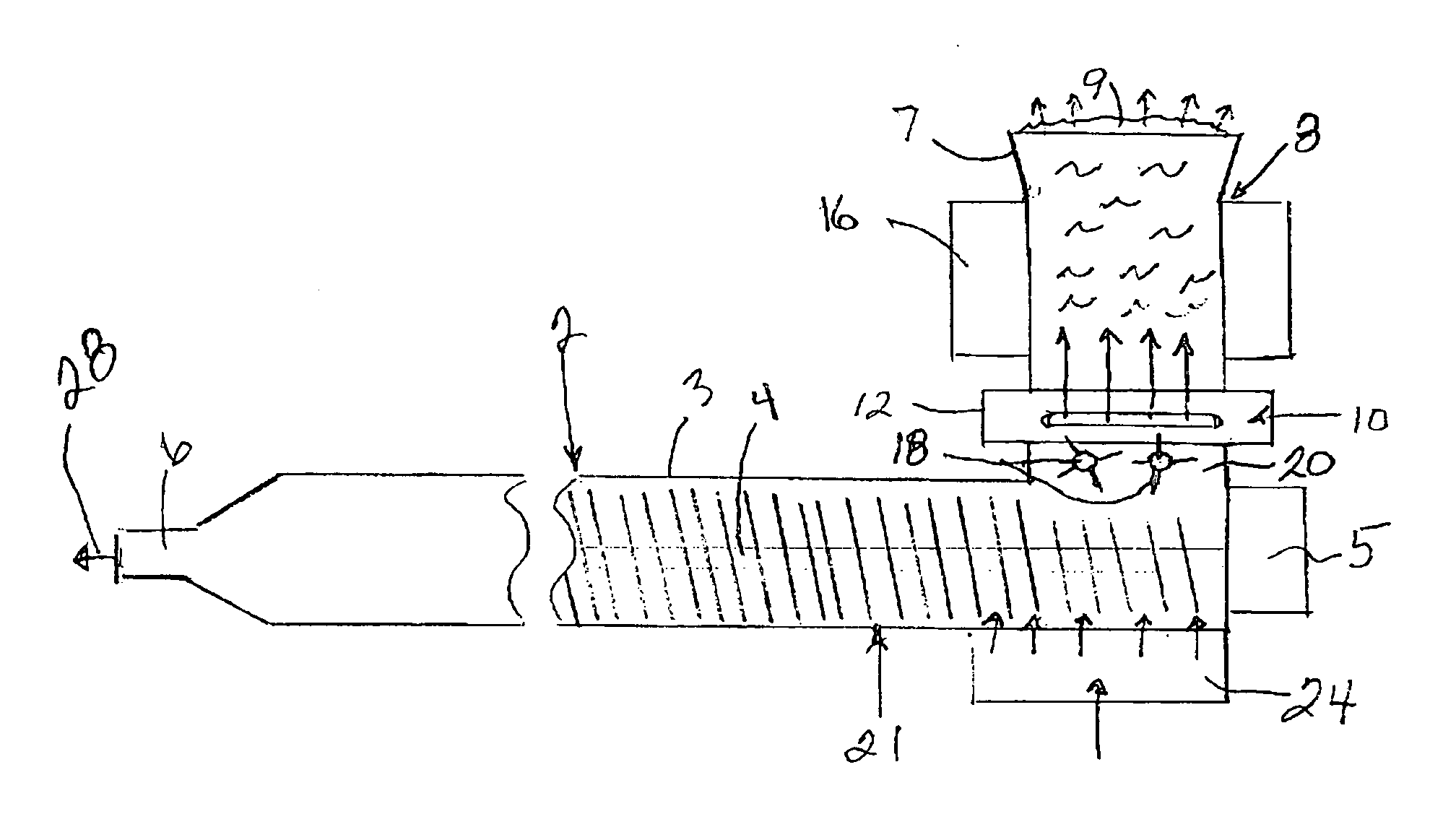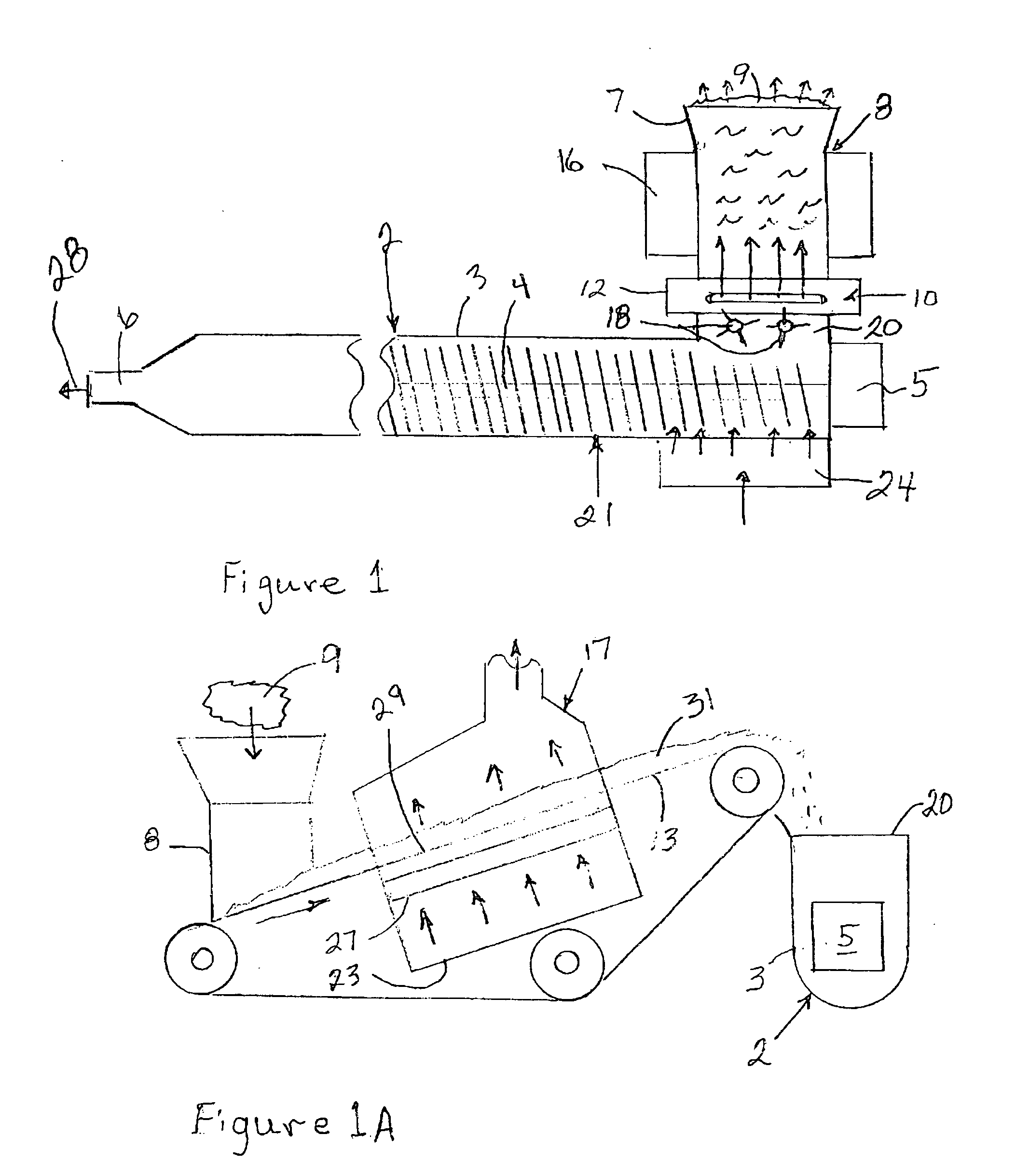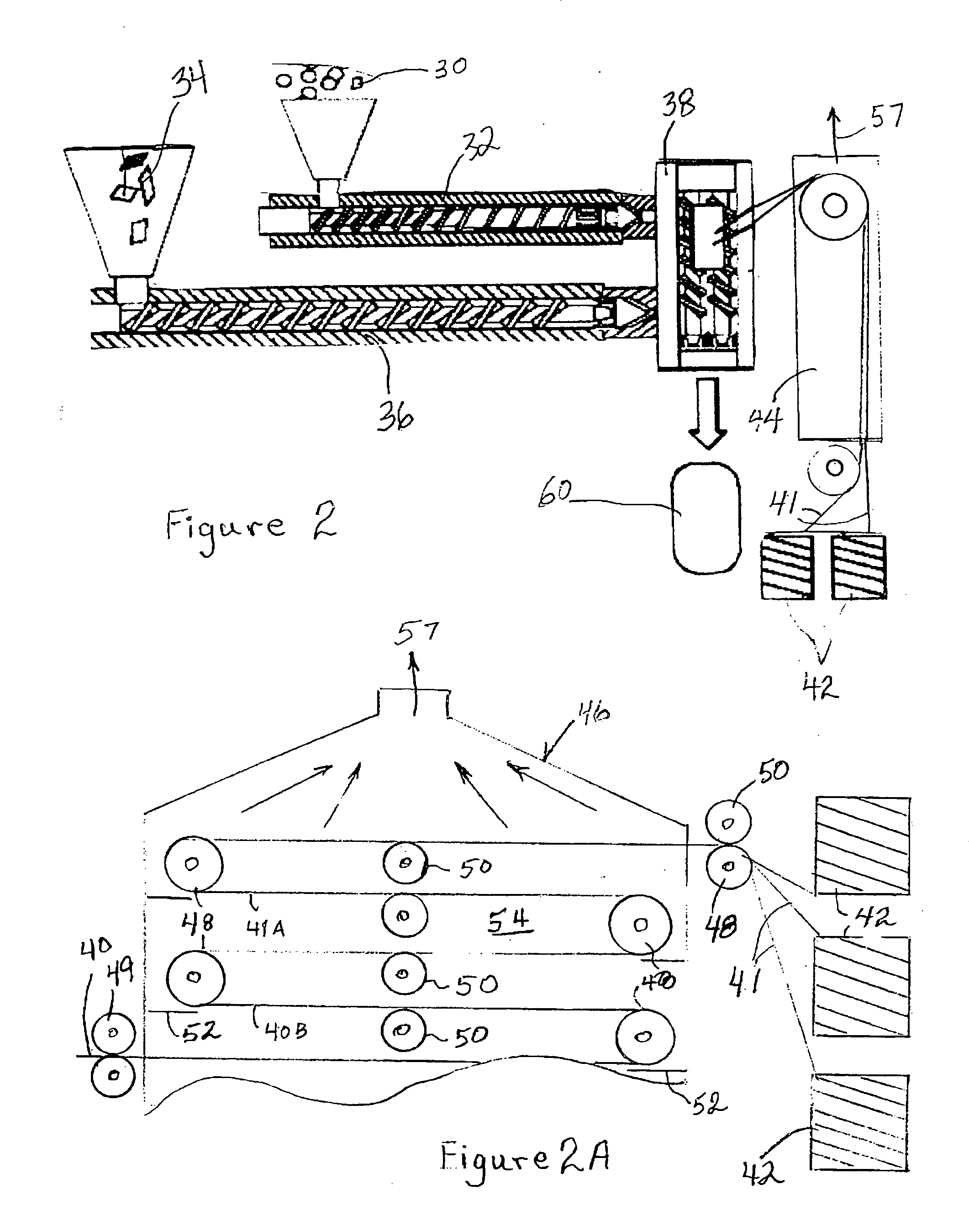Methods and systems for making fiber reinforced products and resultant products
- Summary
- Abstract
- Description
- Claims
- Application Information
AI Technical Summary
Benefits of technology
Problems solved by technology
Method used
Image
Examples
example 1
[0046] More and more automotive parts such as door modules, instrument panels, runner board and others are made from long fiber reinforced Polypropylene. All these parts require a perfect surface (no fiber bundles showing up on the surface) and are in most cases totally or partially textured. Using the existing technologies, a higher amount of scrap rate due to surface quality problems could be found. A good use for the invention is the production of such automotive components with stringent surface requirements.
[0047] A mixture of a polyproylene resin and conventional additives are fed into an inline compounding system like a Dieffenbacher system. The fiber a fed by a gravimetric special fiber feeder downstream in the transition between the two extruders. The melt, coming from the compounding extruder, and the fiber are combined and fed into a second short twin screw system. The moisture in the wet fiber volatilizes or evaporates out of the feeding area and / or downstream and is re...
example 2
[0049] The invention can be used to produce fiber reinforced Nylon parts such as runner boards in a one step injection molding process without pre-compounding. The fibers are metered to a belt using a gravimetric controlled feeder like a Brabender fiber feeder available from Brabender Technologie, Inc. of Mississauga, Ontario, Canada, and dried by running the conveyor belt through an oven. The fibers are than combined with the resin and the additives and fed into an injection molding machine. The easy to disperse wet fiber produces the necessary wet out and fiber distribution in an injection molding machine with only very limited fiber degradation. After melting and mixing, the resulted fiber reinforced Nylon is injection molded or injection compression molded into the final part.
[0050] The advantages of the present invention include a reduction in the cost of making chopped strand products due to the reduction of expensive sizing ingredients, particularly film formers and binders,...
PUM
| Property | Measurement | Unit |
|---|---|---|
| Length | aaaaa | aaaaa |
| Length | aaaaa | aaaaa |
| Moldable | aaaaa | aaaaa |
Abstract
Description
Claims
Application Information
 Login to View More
Login to View More - R&D
- Intellectual Property
- Life Sciences
- Materials
- Tech Scout
- Unparalleled Data Quality
- Higher Quality Content
- 60% Fewer Hallucinations
Browse by: Latest US Patents, China's latest patents, Technical Efficacy Thesaurus, Application Domain, Technology Topic, Popular Technical Reports.
© 2025 PatSnap. All rights reserved.Legal|Privacy policy|Modern Slavery Act Transparency Statement|Sitemap|About US| Contact US: help@patsnap.com



